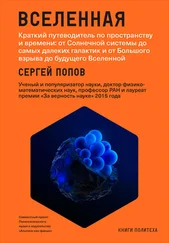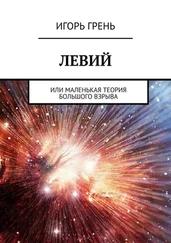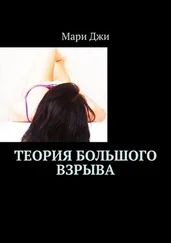Carlip, Steven. “Spontaneous Dimensional Reduction?” In The Sixth International School on Field Theory and Gravitation , edited by Waldyr Alves Rodrigues Jr., Richard Kerner, Gentil O. Pires, and Carlos Pinheiro, 63–72. AIP Conference Proceedings 1483. Melville, NY: American Institute of Physics, 2012.
Carroll, Sean M. “In What Sense Is the Early Universe Fine-Tuned?” arXiv.org, June 11, 2014.
Opening talk at Setting Time Aright, conference of the Foundational Questions Institute, Bergen, Norway, and Copenhagen, Denmark, August 27 — September 1, 2011.
Spacetime and Geometry: An Introduction to General Relativity . San Francisco: Addison-Wesley, 2004.
Casey, Edward S. The Fate of Place: A Philosophical History . Berkeley: University of California Press, 1997.
Castellani, Elena. “Dirac on Gauges and Constraints.” International Journal of Theoretical Physics 43, no. 6 (June 2004): 1503–14.
Chambers, R. G. “Shift of an Electron Interference Pattern by Enclosed Magnetic Flux.” Physical Review Letters 5, no. 1 (July 1, 1960): 3–5.
Chew, Geoffrey F. “The Dubious Role of the Space-Time Continuum in Subatomic Physics.” Science Progress 51, no. 204 (October 1963): 529–39.
“‘Bootstrap’: A Scientific Idea?” Science 161, no. 3843 (August 23, 1968): 762–65.
Clifton, Robert K., and Hans P. Halvorson. “Entanglement and Open Systems in Algebraic Quantum Field Theory.” Studies in History and Philosophy of Science Part B 32, no. 1 (March 2001): 1–31.
Clifton, Robert K., D. V. Feldman, Hans P. Halvorson, Michael Redhead, and Alexander Wilce. “Superentangled States.” Physical Review A 58, no. 1 (July 1, 1998): 135–45.
Coleman, Sidney. “Why There Is Nothing Rather Than Something: A Theory of the Cosmological Constant.” Nuclear Physics B 310, nos. 3–4 (December 12, 1988): 643–68.
Collins, Harry M., and Trevor J. Pinch. Frames of Meaning: The Social Construction of Extraordinary Science . London: Routledge and Kegan Paul, 1982.
Copenhaver, Brian P. “Natural Magic, Hermetism, and Occultism in Early Modern Science.” In Reappraisals of the Scientific Revolution , edited by David C. Lindberg and Robert S. Westman, 261–301. New York: Cambridge University Press, 1990.
Cornford, F. M. “The Invention of Space.” In The Concepts of Space and Time: Their Structure and Their Development , edited by Milič Čapek, 3–16. Boston Studies in the Philosophy of Science 22. New York: Springer, 1976.
Cramer, John G. “The Quantum Handshake.” The Alternate View, Analog Science Fiction and Fact , November 1986.
Craps, Ben, Savdeep Sethi, and Erik P. Verlinde. “A Matrix Big Bang.” Journal of High Energy Physics 10, no. 1 (October 2005).
Cushing, James T. “Locality/Separability: Is This Necessarily a Useful Distinction?” PSA: Proceedings of the Biennial Meeting of the Philosophy of Science Association 1994. Vol. 1, Contributed Papers , 107–16. Chicago: University of Chicago Press, 1994.
Quantum Mechanics: Historical Contingency and the Copenhagen Hegemony . Chicago: University of Chicago Press, 1994.
Theory Construction and Selection in Modern Physics: The S Matrix . New York: Cambridge University Press, 1990.
Cushing, James T., and Ernan McMullin, eds. Philosophical Consequences of Quantum Theory: Re fl ections on Bell’s Theorem . Notre Dame, IN: University of Notre Dame Press, 1989.
Davies, Paul C. W., and J. R. Brown. The Ghost in the Atom: A Discussion of the Mysteries of Quantum Physics . New York: Cambridge University Press, 1986. Reprint, 1993.
Davis, Tamara M., and Charles H. Lineweaver. “Expanding Confusion: Common Misconceptions of Cosmological Horizons and the Superluminal Expansion of the Universe.” Publications of the Astronomical Society of Australia 21, no. 1 (2004): 97–109.
de Haas-Lorentz, Geertruida Luberta. H. A. Lorentz: Impressions of His Life and Work . Amsterdam: North Holland Publishing, 1957.
de Muynck, Willem M. “Can We Escape From Bell’s Conclusion That Quantum Mechanics Describes a Non-Local Reality?” Studies in History and Philosophy of Science Part B 27, no. 3 (September 1996): 315–30.
Descartes, René. Principles of Philosophy . Translated by Valentine Rodger Miller and Reese P. Miller. New York: Springer, 1984.
The Philosophical Writings of Descartes. Vol. 3, The Correspondence . Translated by John Cottingham, Robert Stoothoff, and Dugald Murdoch. New York: Cambridge University Press, 1991.
d’Espagnat, Bernard. “The Quantum Theory and Reality.” Scientific American , November 1979.
DeWitt, Bryce S. “Quantum Mechanics and Reality.” Physics Today 23, no. 9 (September 1970): 155–65.
Dickens, Charles. The Personal History of David Copperfeld . Edited by Trevor Blount, New York: Penguin Classics, 1966.
Dickson, Michael. Quantum Chance and Non-Locality: Probability and Non-Locality in the Interpretations of Quantum Mechanics . Cambridge: Cambridge University Press, 1998.
Dijksterhuis, E. J. The Mechanization of the World Picture: Pythagoras to Newton . Translated by C. Dikshoorn. Prince ton, NJ: Prince ton University Press, 1986.
Dirac, Paul Adrien Maurice. “Classical Theory of Radiating Electrons.” Proceedings of the Royal Society A: Mathematical and Physical Sciences 167, no. 929 (August 5, 1938): 148–69.
“Quantised Singularities in the Electromagnetic Field.” Proceedings of the Royal Society A: Mathematical Physical and Engineering Sciences 133, no. 821 (September 1, 1931): 60–72.
“The Evolution of the Physicist’s Picture of Nature.” Scientific American , May 1963, 45–53.
Dobbs, B. J. T. “Newton’s Alchemy and His Theory of Matter.” Isis 73, no. 4 (December 1982): 511–28.
Doran, Barbara Giusti. “Origins and Consolidation of Field Theory in Nineteenth-Century Britain: From the Mechanical to the Electromagnetic View of Nature.” Historical Studies in the Physical Sciences 6 (1975): 133–260.
Dowker, Fay. “Causal Sets and the Deep Structure of Spacetime.” In One Hundred Years of Relativity: Space-Time Structure; Einstein and Beyond , edited by Abhay Ashtekar, 445–64. Hackensack, NJ: World Scientific, 2005.
Dreyer, Olaf. “The World Is Discrete.” arXiv.org, July 23, 2013.
Duff, Michael J. “The Theory Formerly Known as Strings.” Scientific American , February 1998.
Duncan, Anthony. The Conceptual Framework of Quantum Field Theory . New York: Oxford University Press, 2012.
Earman, John. “Locality, Nonlocality, and Action at a Distance: A Skeptical Review of Some Philosophical Dogmas.” In Kelvin’s Baltimore Lectures and Modern Theoretical Physics: Historical and Philosophical Perspectives , edited by Robert Kargon and Peter Achinstein, 449–90. Cambridge, MA: The MIT Press, 1987.
A Primer on Determinism . Boston: Kluwer Academic Publishers, 1986.
“Recent Work on Time Travel.” In Time’s Arrows Today: Recent Physical and Philosophical Work on the Direction of Time , edited by Steven F. Savitt, 268–310. New York: Cambridge University Press, 1995.
World Enough and Space-Time: Absolute Versus Rational Theories of Space and Time . Cambridge, MA: The MIT Press, 1989.
Easther, Richard, Raphael Flauger, Paul McFadden, and Kostas Skenderis. “Constraining Holographic Inflation with WMAP.” Journal of Cosmology and Astroparticle Physics , no. 9 (September 2011).
Читать дальше
Конец ознакомительного отрывка
Купить книгу
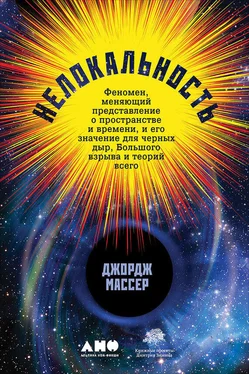

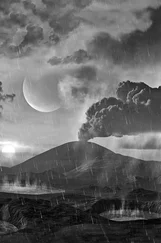
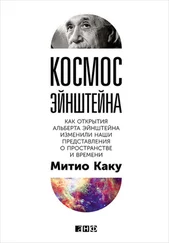



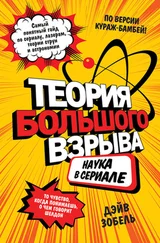
![Стивен Хокинг - Краткая история времени. От Большого взрыва до черных дыр [litres]](/books/416997/stiven-hoking-kratkaya-istoriya-vremeni-ot-bolshogo-thumb.webp)
